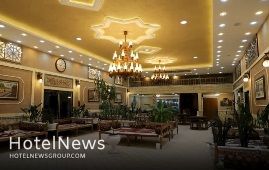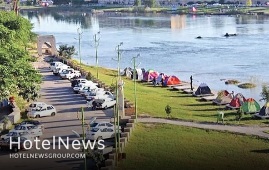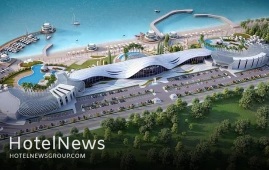
Millions of tourists are set to visit Dubai for the delayed Expo 2020, which is set to run from October 1 this year through to March 31 2022. The amusement and attractions industry has been buoyed by the promise of the resulting degree of "normal" business, promised by the director general of the emirate’s Department of Tourism and Commerce Marketing, Helal Al Marri. He asserted last week that the emirate is determined to go ahead with the celebration, despite the spike in infections that has occurred as a result of Dubai opening up to tourism just before Christmas. In fact, Al Marri blamed that spike on a small number of locals ignoring the regulations. “We are confident,” he said, “that we will be ready to make sure that the growth starts this summer, and by Expo in the fourth quarter, we look forward to welcoming the world.” The Expo is one of the world’s biggest organised events. If it goes ahead, it will generate billions in revenue for the government and the tourist industry in general. The infection rate in Dubai has risen four-fold over the Christmas and New Year period, but Al Marri was clear that the blame for this rested with the locals. He said: “We had a 98 per cent compliance and saw no increase in infections, but when that level of compliance dropped by a small margin, we saw the infection rate increase.” Since then, the UAE has been one of the world’s most efficient destinations in the roll-out of vaccinations, with around a third of the entire population inoculated by early February.
Create: Feb 8, 2021 Edit: Feb 8, 2021 International News
Japan's travel surplus in 2020 shrank to nearly one-fifth of the previous year, the first drop since the balance turned into the black in 2015, as international travel bans amid the coronavirus pandemic had a huge impact on the number of inbound visitors, government data showed Monday. The travel balance, which reflects the amount of money foreign visitors spend in Japan versus Japanese spending abroad, tumbled 79.2 percent to 562.1 billion yen ($5.3 billion) from a record 2.70 trillion yen in 2019 since annual comparable data became available in 1996, the Finance Ministry said in a preliminary report. Still, Japan's travel balance in 2020 logged black ink for the sixth straight year. In 2015, the balance saw its first black ink of 1.09 trillion yen since data compilation began in 1996, following a 44.4 billion yen deficit marked in 2014. Since 2011, when a massive earthquake, tsunami and the subsequent Fukushima nuclear crisis in northeastern Japan helped slightly widen a travel deficit to 1.30 trillion yen, the country's annual travel balance had continued to improve until 2019 with a steady increase in the number of foreign visitors. The reporting year's surplus in the current account, one of the widest gauges of international trade, fell 13.8 percent from 2019 to 17.70 trillion yen, its lowest level since 16.52 trillion yen recorded in 2015. It had increased 5.8 percent the previous year. In 2020, the goods trade balance saw a surplus for the fifth consecutive year, jumping almost eight-fold from the previous year to 3.05 trillion yen. The impact of a 15.0 percent decline in imports due to falls in prices of crude oil and other energy resources surpassed that of an 11.4 percent slip in exports amid sluggish demand for Japanese products such as cars and auto parts due to the pandemic. With the poor performance of the travel balance, services trade, which also includes cargo shipping, marked a 3.54 trillion yen deficit, following the first-ever surplus of 124.8 billion yen in 2019. It was the biggest red ink since the 3.81 trillion yen logged in 2012. The primary income balance, which reflects returns on overseas investments, showed a surplus of 20.72 trillion yen, the fourth largest since 1996, despite a 3.2 percent dip from a record 21.40 trillion yen in 2019, the first decline in four years. Many countries have imposed sweeping travel restrictions in response to the global spread of infections after the virus was first detected in China in late 2019. In 2020, 4.12 million foreigners visited Japan, which has promoted inbound tourism as a pillar of its growth strategy for revitalizing regional economies in recent years, plummeting a record 87.1 percent from 31.88 million in the previous year, according to the Japan Tourism Agency. Japan was originally scheduled to host the Tokyo Olympic and Paralympic Games last summer, but they were postponed for a year amid the pandemic. Largely consisting of tourists from China, South Korea and Taiwan, foreign visitors had kept expanding until 2019, when the figure hit a record high for the seventh year in a row. In December alone, Japan posted a current account surplus of 1.17 trillion yen, more than double the previous year's 544.9 billion yen to mark the 78th straight month of black ink. In the month, the country had a goods trade surplus of 965.1 billion yen and a services trade deficit of 343.5 billion yen. Primary income registered a surplus of 649.2 billion yen.
Create: Feb 8, 2021 Edit: Feb 8, 2021 International News
Revenue loss in the international tourism sector in 2020 caused by a decrease in travelers crossing borders is estimated at $1.3 trillion, on the back of strict travel bans imposed by countries amid the coronavirus pandemic, a U.N. body said. Last year's international arrivals fell by one billion, or 74 percent, from 2019, ensuring that the overall estimated damage was over 11 times larger than in 2009 in the wake of the global financial crisis, according to a recent press release by the World Tourism Organization, a specialized agency of the United Nations. Due to the economic fallout from the virus spread, 100 to 120 million people have been put at risk of losing their jobs in the tourism industry, the Madrid-based body said, adding that many of them are from small and midsized business operators. "Global tourism suffered its worst year on record in 2020," the agency, also known as UNWTO, said in the news release, citing an "unprecedented fall in demand and widespread travel restrictions" to prevent the virus from further spreading. By region, Europe saw the largest drop in absolute numbers, with overseas arrivals down 500 million, or 70 percent, from the previous year. Meanwhile, those in Asia and the Pacific nations tumbled by 300 million, marking the sharpest decrease at 84 percent. On a percentage basis, the Middle East and Africa followed with a 75 percent plunge each, with the North and South Americas experiencing a 69 percent sink. As for 2021, a UNWTO panel of experts survey showed 45 percent of respondents forecast the situation will become better, while 30 percent predicted a deterioration, according to the press release. The remaining 25 percent expected a similar performance to 2020. The survey also showed that 43 percent think the tourism industry will rebound to pre-pandemic levels in 2023, with 41 percent saying it will happen in 2024 or later. UNWTO said that it expects the "gradual rollout of a COVID-19 vaccine" to bring about a recovery in consumer sentiment and eased travel restrictions, making travel relatively normal, albeit at a slow pace, during 2021. "While much has been made in making safe international travel a possibility, we are aware that the crisis is far from over," said Zurab Pololikashvili, secretary general of UNWTO. "The harmonization, coordination and digitalization of COVID-19 travel-related risk reduction measures, including testing, tracing and vaccination certificates, are essential foundations to promote safe travel and prepare for the recovery of tourism once conditions allow," the agency's chief added. Since first detected in the central Chinese city of Wuhan in late 2019, the virus has continued to spread globally and has resulted in over 105 million infection cases and more than 2.3 million deaths, according to data compiled by Johns Hopkins University.
Create: Feb 7, 2021 Edit: Feb 7, 2021 International News
Shams ol-Emareh tourist complex was inaugurated in Baqershahr, south of Tehran province, on Wednesday on the occasion of Ten-Day Dawn (Jan. 31- Feb. 10, marking the victory anniversary of the Islamic Revolution). A budget of 370 billion rials (about $ 9 million at the official exchange rate of 42,000 rials per dollar) has been allocated to the project, Parham Janfeshan, the provincial tourism chief, addressing the opening ceremony. Constructed in an area of 11 hectares, the project is expected to create 30 job opportunities, the official added. Referring to tourism as being “advantageous” for the whole province, the official noted the tourism sector and relevant infrastructure are being developed and strengthened in all districts [and counties] of Tehran province even in low-income and deprived areas. Earlier this week, the official announced that a total of 206 tourism-related projects are scheduled to be inaugurated across the Iranian capital during the ten-day Fajr (dawn) ceremonies and celebrations. Ten accommodation centers including hotels, apartment hotels, eco-lodge units as well as tourist complexes, restaurants, and handicrafts workshops will come on stream, he explained. He also noted that a budget of seven trillion rials (about $167 million) has been allocated to the projects, which are expected to generate a total of 930 job opportunities. The mentioned projects will also add 816 beds to the hospitality sector of the Iranian capital, the official added. Hugging the lower slopes of the magnificent, snowcapped Alborz Mountains, Tehran is much more than a chaotic jumble of concrete and crazy traffic blanketed by a miasma of air pollution. This is the nation's dynamic beating heart and the place to get a handle on modern Iran and what its future will likely be. The metropolis has many to offer its visitors including Golestan Palace, Grand Bazaar, Treasury of National Jewels, National Museum of Iran, Glass & Ceramic Museum, Masoudieh Palace, Sarkis Cathedral, Tehran Museum of Contemporary Art, Carpet Museum of Iran, to name a few. The first time Tehran is mentioned in historical accounts is in an 11th-century chronicle in which it is described as a small village north of Ray. It became the capital city of the Seljuk Empire in the 11th century but later declined with factional strife between different neighborhoods and the Mongol invasion of 1220.
Create: Feb 6, 2021 Edit: Feb 6, 2021 Regional News
A total of 43 tourism-related projects, worth 645 billion rials ($15.3 million at the official exchange rate of 42,000 rials per dollar), are scheduled to come on stream across the central Iranian province of Yazd on the occasion of Fajr cerebrations (Jan. 31- Feb. 10, marking the victory anniversary of the Islamic Revolution). Nineteen eco-lodge units, two traditional accommodation centers, seven traditional restaurants, two tourist complexes as well as seven projects in the field of cultural heritage, and six projects in the field of handicrafts will be inaugurated, a provincial tourism official said on Thursday. The mentioned projects will come on stream in different cities across the province including Bafq, Taft, Ardakan, Meybod, and Mehriz, Mohammad Mirshamsi added. The projects are expected to generate 247 job opportunities for the locals after being inaugurated, the official added. In July 2017, the historical structure of the city of Yazd was named a UNESCO World Heritage. Wedged between the northern Dasht-e Kavir and the southern Dasht-e Lut on a flat plain, the oasis city enjoys a very harmonious public-religious architecture that dates from different eras. With its winding lanes, forest of badgirs (wind catchers), mud-brick houses, atmospheric alleyways, and centuries of history, Yazd is a delightful place to stay, referring to as a ‘don't miss’ destination by almost all travel associates in the region. Yazd Jameh Mosque, Dowlatabad Garden, the Yazd Atash Behram, also known as Atashkadeh-e Yazd, Towers of Silence, and adjacent desert landscape are among its tourist sites.
Create: Feb 6, 2021 Edit: Feb 6, 2021 Regional News
Iran’s southeastern Sistan-Baluchestan province has lost 1,440 billion rials ($34.2 million at the official exchange rate of 42,000 rials per dollar) in earnings from tourism as many potential visitors stay away due to the impact of the coronavirus, according to Alireza Jalalzaei, the provincial tourism chief. “Sistan-Baluchestan is a four-season travel destination and even though the province holds vast tourism capacities, it has taken some 1,440 billion rials hit from the coronavirus outbreak from mid-Esfand 1398 (early March 2020) to the end of the month Dey (January 19),” the official said on Wednesday. The official noted that Sistan-Baluchestan has set sights on [a significant] tourism development, and its travel infrastructure has been drastically extended over the past couple of years. “From the year 1396 (2017) onwards, the number of travel infrastructure in Sistan-Baluchestan has raised from 40 to 200 ones…. Nowadays tourism of this province has come to fame and distinction,” he explained. Elsewhere in his remarks, the official pointed to various tourism campaigns being launched over the past couple of years, adding the campaign ‘Let’s see Sistan, let’s hear Baluchestan’ has taken a noticeable impact on the tourism thrive of the province mainly by the means of on-line programs. “Despite all the bottlenecks, the province’s tourism has not been forced to shut….” “For instance, the occupancy rate of hotels in [the city of Chabahar] is [currently] more than 90 percent….. and currently, some 100 to 110 ecolodge unites are active across the province,” the official said. Last year, Cultural Heritage, Tourism, and Handicrafts Minister Ali-Asghar Mounesan said that the development of the travel industry across Sistan-Baluchestan province is among the top priorities for the ministry. “I am interested in Sistan-Baluchestan, and the development of this province is a priority for this ministry and the government,” the minister stated. “The majority of my travels during my tenure has been to Sistan-Baluchestan, which I consider it as a safe province with significant values in terms of culture, history, handicrafts, and tourism.” The collective province -- Sistan in the north and Baluchestan in the south -- accounts for one of the driest regions of Iran with a slight increase in rainfall from east to west, and an obvious rise in humidity in the coastal regions. In ancient times, the region was a crossword of the Indus Valley and the Babylonian civilizations. The province possesses special significance because of being located in a strategic and transit location, especially Chabahar which is the only ocean port in Iran and the best and easiest access route of the middle Asian countries to free waters. The vast province is home to several distinctive archaeological sites and natural attractions, including two UNESCO World Heritage sites, namely Shahr-e-Soukhteh (Burnt City) and Lut desert.
Create: Feb 6, 2021 Edit: Feb 6, 2021 Regional News
The first-ever hotel in the city of Rey, southeast of Tehran, was inaugurated on Tuesday on the occasion of Ten-Day Dawn (Jan. 31- Feb. 10, marking the victory anniversary of the Islamic Revolution), ISNA reported. The inauguration ceremony was attended by Mohammad Mohammadi Reyshahri, the custodian of the Holy Shrine of Shah Abdol Azim, and Anushiravan Mohseni Bandpey, the governor-general of Tehran province, and several local officials and tourism insiders. A budget of 800 billion rials (about $19 million at the official exchange rate of 42,000 rials per dollar) has been allocated to the project which adds 42 rooms and 108 beds to the hospitality sector of the city, the provincial tourism chief Parham Janfeshan announced on the sidelines of the ceremony. The construction and inauguration of this hotel will lead to the development of religious tourism infrastructure in the city, which will bring more welfare to the pilgrims of the Holy Shrine of Shah Abdol Azim, Janfeshan said. Construction work of the hotel took four years in a piece of land covering more than eight hectares, he added. The history of settlement in Rey dates from the 3rd millennium BC. It is featured in the Avesta (the original document of Zoroastrianism, an Iranian religion) as a sacred place, and it is also mentioned in the book of Tobit, of the biblical Apocrypha, and by classical authors. According to Encyclopedia Britannica, Rey was one of the capital cities of the Parthian empire (3rd century BC–3rd century CE). It was captured by the Muslim Arabs in 641 CE. During the reign of the Muslim caliph al-Mahdi in the 8th century, the city grew in importance until it was rivaled in western Asia only by Damascus and Baghdad. Islamic writers described it as a city of extraordinary beauty, built largely of fired brick and brilliantly ornamented with blue faience (glazed earthenware). It continued to be an important city and was briefly a capital under the rule of the Seljuqs, but in the 12th century, it was weakened by the fierce quarrels of rival religious sects. In 1220 the city was almost entirely destroyed by the Mongols, and its inhabitants were massacred. Most of the survivors of the massacre moved to nearby Tehran, and the deserted remnants of Rey soon fell into complete ruin. Rey, however, retains enough history to give it a different sensibility, its key sight is the elaborately decorated Shah Abdol Azim Shrine. Beside the shrine complex is a lively bazaar, while further afield are a couple of minor historical attractions.
Create: Feb 5, 2021 Edit: Feb 6, 2021 Regional News
A new building is poised to transform the area around a New York City landmark and one of its busiest subway stations. Image renderings released Tuesday by RXR Realty show what would eventually be 175 Park Avenue, an 83-story tall structure that developers say will be the new Grand Hyatt hotel that will also revitalize the Grand Central Terminal with brand new public spaces. The plan is to demolish the current Grand Hyatt over the course of the next year and build the 1,646 feet tall building with up to 500 hotel rooms, 2.1 million square feet of new office space and make improvements to infrastructures around the Grand Central-42nd Street subway station. The 5,400 square feet hall would feature more signage, train schedules and arrival times, and ticketing and turnstiles will be relocated to street level to ease foot traffic. The new entrance to 42nd Street subway station will be where the ADA elevator is currently located but developers say the reconfiguration will make a more efficient route for customers with disabilities. The changes also include upgrades to the Lexington Avenue entrance where the sidewalk is expected to widen by five feet As for additional public spaces, RXR Realty said there will be three interconnected public terraces that wrap around the eastern, northern, and western sides of the building and that they will be accessible by elevator. Similar to the High Line, the Grand Central Terrace, Chrysler Terrace and Graybar Terrace will "create new vistas for pedestrians to view the neighborhood’s historic architecture" with space for outdoor seating and food and beverage concessions, the news released said.
Create: Feb 4, 2021 Edit: Feb 4, 2021 International News
The Jordan Tourism Board has partnered with workspace operator Venture X to launch a dedicated accelerator for tourism start-ups. The accelerator will be a “highly selective, equity-based three-month programme for the most promising technology start-ups or pre-scale-ups that can power the travel and tourism industry”, according to a statement from the tourism board on Wednesday. “This partnership is a response to the challenges ahead,” Abdul Razzaq Arabiat, the board's managing director, said. The accelerator programme is looking for innovative companies that are developing ways to “future-proof” Jordan’s travel and tourism industry, the statement said, as tourism companies look to rebound in the wake of Covid-19. The collapse in international travel due to the pandemic led the global tourism industry to lose $1.3 trillion in export revenue, almost 11 times more than the loss recorded during the 2008 global economic crisis, according to the UN World Tourism Organisation. Companies selected to take part will undergo a three-month intensive programme to identify a potential pilot project and scope, followed by three months of implementation working alongside the top 10 industry partners, the statement added. “The pandemic is going to change the tourism industry,” Yousef Hamidaddin, managing partner of Venture X, said. “Innovative solutions will allow people to continue to travel and explore, which represents an opportunity for entrepreneurs and start-ups.” Jordan was chosen by Lonely Planet as the Most Welcoming Destination of 2021. The country reopened to travellers in September 2020 after restrictions due to Covid-19. The tourism industry contributes 13 per cent to 15 per cent of the country’s gross domestic product and employs almost 60,000 people. The pandemic came months after a record-breaking year for tourism, with the kingdom attracting one million visitors and generating 4.1 billion Jordanian dinars ($5.8bn) in 2019.
Create: Feb 4, 2021 Edit: Feb 4, 2021 International News
Red Sea Development Company, the developer of the mammoth tourism project on Saudi Arabia’s west coast, said it awarded contracts to complete structural work for a luxury hotel and villas. Saudi Arabian contractor Al Bawani will conduct civil and structural works across 40 hotel villas on the Southern Dunes site while Swiss timber specialist Blumer Lehmann will carry out planning, construction and fabrication works for a hotel on Ummahat Al Shaykh Island, the developer said in a statement on Wednesday. The company did not disclose the value of these contracts. The contract awards "signify the start of a new phase" for the mega tourism project as it advances into hotel development, John Pagano, chief executive of the Red Sea Development Company, said. “The Red Sea Development Company has made significant progress in terms of the design and construction of key infrastructure to enable the development of hotel assets,” he added. The project is a key tenet of Saudi Arabia's tourism strategy, which aims to increase the contribution of tourism to more than 10 per cent of the kingdom’s GDP by 2030, up from 3 per cent in 2020. The Red Sea Development Company’s masterplan covers a 28,000 square kilometre site containing 90 islands. Set to welcome its first visitors in 2022, the project is expected to be completed by 2030. It will house 50 hotels containing 8,000 rooms, a luxury marina, entertainment and leisure facilities. The company, which is owned by the kingdom’s Public Investment Fund, is developing 16 hotels with 3,000 rooms across five islands and two inland sites as part of the first phase that will be delivered by 2023. This phase will cost an estimated 28 billion Saudi riyals to 29bn riyals ($7.46bn-$7.73bn) to develop. Al Bawani's work will help the developer to link villas, restaurants and central buildings within its resort, the company said. Blumer Lehmann will design and manufacture all engineered timber material for a hotel, overwater and beach villas, spa and fitness building, restaurants and an arrival building. The company said last year it had awarded contracts worth 7.5bn riyals to date. Last month, the Red Sea Development Company chose Dublin-based DAA International to operate the project's international airport. It awarded the airport design contract to UK-based architecture firm Foster + Partners in October 2019. The project is being built under a “regenerative tourism” model, which aims not only to protect local habitats, but also create conditions for local environments to thrive. Only 22 of the site's 90 islands will be built on and visitor numbers to the area will be capped at one million a year.
Create: Feb 4, 2021 Edit: Feb 4, 2021 International News
Well-planned travels during the Persian New Year (Noruz) holidays, which will start on March 20, would be possible in close coordination with the National Headquarters for Coronavirus Control, the deputy tourism minister said on Tuesday. In order to create social vitality during the holidays, the ministry has set some rules for possible Noruz trips to control and monitor them carefully, Vali Teymouri said. “The trips will be possible only within the framework of planned tours through licensed travel agencies and under the supervision of the tourism ministry.” For people, who travel individually and outside of the tours, a reservation for an authorized accommodation center will be necessary, the official added. He also emphasized that all travelers and tourists need to follow strict health protocols during their trips and stays. Last March, which is the most bustling and booming period for the tourism sector because it culminates in Noruz, all celebrations were canceled in all 31 provinces across the country, and all museums and historical sites, affiliated with the Ministry of Cultural Heritage, Tourism and Handicrafts went on a lockdown due to the coronavirus pandemic. Last year, before the Persian New year, the tourism minister Ali-Asghar Mounesan asked people to postpone or reschedule tours to help the tourism industry deal with the coronavirus outbreak. “My suggestion to my dear people is that they do not cancel their hotel reservations and domestic tours as far as possible to help the tourism industry and prevent it from bankruptcy by making their reservations in time after the virus is controlled.” Iranians made 74 million overnight stays in their domestic trips during the Noruz holidays two years ago (2019), which showed a 20 percent increase year on year. And some 132 million visits to tourist attractions were registered during the mentioned period, which showed a 34 percent growth year on year, according to data compiled by the Ministry of Cultural Heritage, Tourism and Handicrafts. The Islamic Republic was ranked the third fastest-growing tourism destination in the globe in 2019, with 27.9 percent growth year on year, according to the latest statistics released by the United Nations World Tourism Organization (UNWTO). However, the country expects to reap a bonanza from its numerous tourist spots. Under the 2025 Tourism Vision Plan, it aims to increase the number of tourist arrivals from 4.8 million in 2014 to 20 million in 2025.
Create: Feb 4, 2021 Edit: Feb 4, 2021 Regional News
Iranian President Hassan Rouhani on Tuesday inaugurated tens of tourism-related projects via a video conference on the occasion of Ten-Day Dawn (Jan. 31- Feb. 10, marking the victory anniversary of the Islamic Revolution). A total investment value of 14 trillion rials (about $334 million at the official exchange rate of 42,000 rials per dollar) is channeled through the projects countrywide, Cultural Heritage, Tourism, and Handicrafts Minister Ali-Asghar Mounesan announced on Monday. Tourism-related projects worth 220 trillion rials ($5.2 billion) had previously come on stream since President Rouhani inaugurated his second four-year term in 2017. With these new projects being taken into account, the total investments in this sector are added up to 234 trillion rials ($5.5 billion), which is a new record, the tourism minister explained. The Ministry of Cultural Heritage, Tourism and Handicrafts has played an important role in the country’s currency earnings, as in 2019, the tourism sector’s share of the country’s GDP was $11.8 billion, which is a very significant number, Mounesan said. Referring to passenger flows, he stated some 8.8 million foreign nationals visited the Islamic Republic during the first ten months of the past Iranian year 1398(March 20, 2019-March 19, 2020) before the coronavirus outbreak puts almost everything on a halt. Despite the coronavirus pandemic and the damages it has caused to the country’s tourism, this sector is still running and several projects are underway, the official added. Back in August, the minister announced that Iran’s travel sector has suffered a loss of 12 trillion rials (some $2.85 billion) since the outbreak of the coronavirus pandemic, however, he mentioned that all the tourism businesses across the country will have the capacity to fully resume their activities both in domestic and foreign markets. “Many tourism projects have been completed, or are being implemented, showing that a very good capacity has been created in the field of tourism in the country and [this trend] should not be stopped,” he explained. Mounesan went on to say that 2,451 tourism-related projects worth 1,370 trillion rials (around $32 billion) are being implemented across the country that signals a prosperous future for Iran’s tourism sector. The tourism minister also said the coronavirus pandemic should not bring traveling to a complete standstill. “Corona is a fact, but can the virus stop tourism? Certainly not. For us, the coronavirus is a new experience in dealing with crises that teaches tourism experts around the world how to deal with such a disaster, and thankfully governments are turning this into an opportunity for better planning.” Some experts believe that the coronavirus pandemic may turn tours and travels into luxury items as observing health protocols will raise the cost of travel in the country. Mohammad Ali Vaqefi, the vice president of the Iranian Tour Operators Association, warned earlier in June that with the continuation of the coronavirus outbreak, tourists may prefer individual travel rather than tours, adding that they may also choose to go on a trip by their vehicles and stay in tents or nature instead of hotels. In the global scene, part of the new travel puzzle is the jet-set mindset focusing on tough hygiene care and social distancing as cardinal guidelines for slowing the spread of the virus. So the average expenditure will be raised for a typical traveler particularly inbound passengers so lesser ones can afford to buy privacy and space and safer travel amenities. Iran expects to reap a bonanza from its numerous tourist spots such as bazaars, museums, mosques, bridges, bathhouses, madrasas, mausoleums, churches, towers, and mansions, of which 24 being inscribed on the UNESCO World Heritage list. Under the 2025 Tourism Vision Plan, it aims to increase the number of tourist arrivals from 4.8 million in 2014 to 20 million in 2025. The latest available data show eight million tourists visited the Islamic Republic during the first ten months of the past Iranian calendar year (started March 21, 2019).
Create: Feb 4, 2021 Edit: Feb 4, 2021 Regional News
